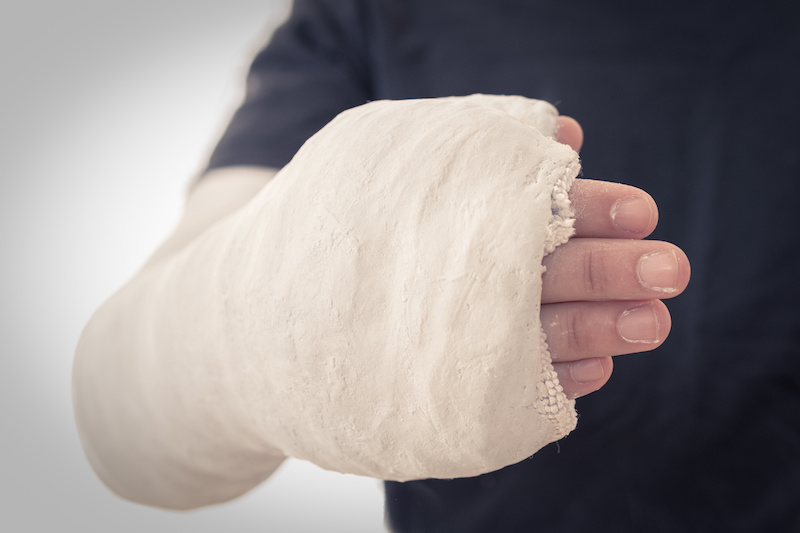Back in the day when I was a junior doctor, one of the delights was making a cast from Plaster of Paris (POP). Although now been largely replaced by fibreglass, there was always something satisfying about feeling the warmth spread through the plaster once it was wet, then moulding it to fit a patient’s limb.
The role of a cast is to keep the fracture in correct alignment, and allow the immobility necessary for healing. In the 12th C, the Italian School of Salerno (the world’s first medical school) recommended bandages hardened with mixture of egg and flour (very similar to the mixture used by artists to create a fresco). Ambroise Paré used a mixture of wax, cloth cardboard and parchment for his casts.
POP is made from a fine white powder of calcium sulphate (or gypsum). It hardens as it dries, but there is a window of time allowing the cast to be moulded. (Anyone who has tried setting a bird’s wing or leg with paddle pop sticks will readily appreciate this.) Once it hardens, its rigidity supports immobility of the fracture.
Despite its name, POP has been known since ancient times, though its use for casts has only been relatively recent. A large deposit of gypsum discovered in Montmartre led calcined (or roasted) gypsum to be called Plaster of Paris.
The Belgium surgeon Louis Seutin, who served at Waterloo, developed the ‘bandage amidonnee’. This became the basis of the POP technique. After wrapping the fractured limb in wool, a pasteboard splint was cut, dampened then moulded to the limb. Then came a wrapping of bandages, followed by a starch coating.
Born in 1805, Antonius Mathijsen spent his medical career with the Dutch Army. In 1851, while stationed in Haarlem, he developed the method of applying POP bandages. Mathijsen rubbed POP through material such as linen, moistened the bandages with a damp brush as they were applied, then rubbed by hand until they hardened.
Unlike Seutin’s method, POP bandages proved quick to apply, could be done by one person, provided an exact fit, and hardened within some thirty minutes (as opposed to days). They could also could be easily cut to provide relief should they prove too tight.
Nikolai Ivanovich Pirogov, Professor of Surgery at the Military Academy in St Petersburg, made use of the new POP in the treatment of mass casualties during the Crimean War. (He also introduced ether anaesthesia into Russia, and as well as bringing female nurses into the military hospitals at the same time Florence Nightingale began a similar program in the British military hospitals.) As a result, the use of POP became commonplace for the treatment of fractures.


Leave A Comment
You must be logged in to post a comment.